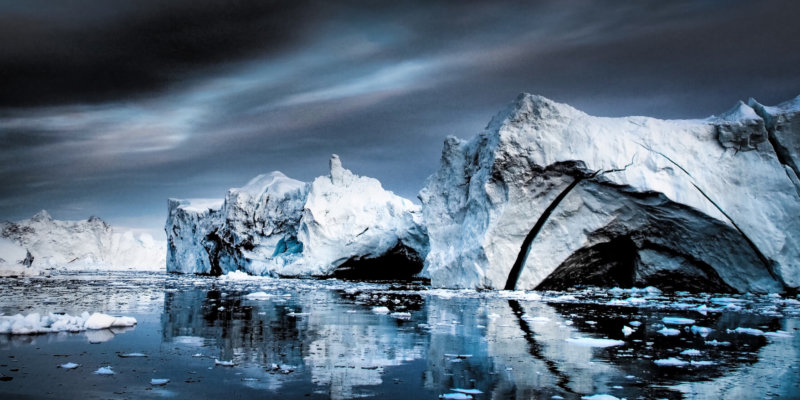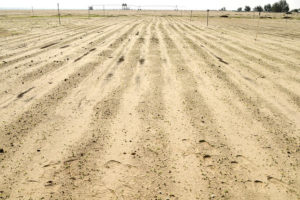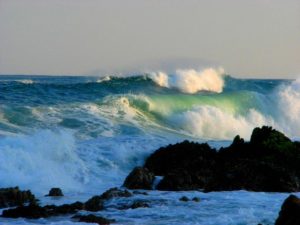Scientists Are Stumped by This Climate Puzzle
Researchers are teasing out the complexities of greenhouse gases and global warming. Ilulissat in Greenland, a significant source of methane. (Jennifer Latuperisa-Andresen on Unsplash)
Ilulissat in Greenland, a significant source of methane. (Jennifer Latuperisa-Andresen on Unsplash)
Two new studies have highlighted yet more unexpected findings in the epic story of the Earth’s carbon stores: how the world’s waters and soils accumulate and discharge them.
One team of researchers has found, to their surprise, that the meltwaters of Greenland are washing measurable quantities of carbon into the atmosphere in the form of the potent greenhouse gas methane.
And another has looked more closely at the way carbon is stored in the world’s soils, and come to the conclusion that even the minerals in the bedrock play a role: with help from rainwater, they can capture and hold potentially vast quantities of carbon in the soils of planet Earth.
Neither discovery changes the big picture of global warming driven by profligate human combustion of fossil fuels during the last two centuries. But both are reminders that climate scientists still have a lot to learn about precisely how the trafficking of carbon between life, rocks and atmosphere really happens.
“Before we can start thinking about storing carbon in the ground, we need to understand how it gets there and how likely it is to stick around.”
And both will prompt a fresh look at the great unresolved question facing climate science: how much of the greenhouse gases emitted by human activity can be absorbed naturally by the rocks and living things on the planet?
British, Canadian, US, German, Czech and Danish researchers report in the journal Nature that they camped for three summer months on Greenland to take continuous samples of meltwater from a 600-square-kilometer ice sheet.
They found what they term “a continuous export” of methane: six tons of it from this site alone, or roughly the equivalent of what might be belched from 100 cows. Busy microbes, at work below kilometers of ice, are producing a greenhouse gas many times more potent as a global warming agent than carbon dioxide.
“A key finding is that much of the methane produced beneath the ice likely escapes the Greenland Ice Sheet in large, fast-flowing rivers before it can be oxidized to CO2, a typical fate for methane gas which normally reduces its greenhouse potency,” said Jemma Wadham, of the University of Bristol’s Cabot Institute for the Environment, who led the investigation.
Sizeable challenge
Climate scientists have been worrying for decades about the carbon locked − for the moment − in the Arctic permafrost. But the discovery that even the ice sheets are a source of atmospheric carbon accentuates the scale of the challenge facing those researchers who are trying to settle the great questions of the carbon budget: how much more fossil fuel can humans burn before planetary temperatures reach catastrophic levels, and how much of this build-up of greenhouse gases will be absorbed naturally by oceans, forests and soils?
Attention has repeatedly centered on the role of vegetation, and in particular the great forests, in soaking up some of this carbon.
But huge questions remain about the roles played by flowing water and by soils as bankers of the planet’s atmospheric carbon. A second study in the journal Nature Climate Change offers a fresh insight into the obscurities of carbon storage underfoot.
Iron- and aluminum-bearing minerals in the soils cling to a lot of carbon. How much varies according to rainfall and evaporation, but it could be that between 3% and 72% of organic carbon found in soils is retained by reactive minerals. And, the researchers think, in all, this could add up to 600 billion metric tons worldwide, most of it in the rainforests.
Long-term uncertainty
“When plants photosynthesize, they draw carbon out of the atmosphere, then they die and their organic matter is incorporated in the soil,” said Oliver Chadwick of UC Santa Barbara, one of the researchers. “Bacteria decompose that organic matter, releasing carbon that can either go right back into the atmosphere as carbon dioxide or can get held on the surface of soil minerals.”
What the finding means in the long term is not certain: as the researchers say, the capacity of mineral soils to cling to carbon suggests what they call “high sensitivity to future changes in climate.” That is, with yet more warming, the same mineral soils could release their imprisoned carbon. Nobody knows at what point this would happen.
So there is a need for further research. For more than a decade, scientists have debated the challenge of capturing carbon dioxide and burying it underground, as a way of limiting climate change. The discovery seems to suggest it can be done. But it also suggests ways in which that entrapment could be undone.
“We know less about the soils on Earth than we do about the surface of Mars,” said Marc Kramer of Washington State University, as co-author.
“Before we can start thinking about storing carbon in the ground, we need to understand how it gets there and how likely it is to stick around. This finding highlights a major breakthrough in our understanding.”
Your support matters…Independent journalism is under threat and overshadowed by heavily funded mainstream media.
You can help level the playing field. Become a member.
Your tax-deductible contribution keeps us digging beneath the headlines to give you thought-provoking, investigative reporting and analysis that unearths what's really happening- without compromise.
Give today to support our courageous, independent journalists.






You need to be a supporter to comment.
There are currently no responses to this article.
Be the first to respond.